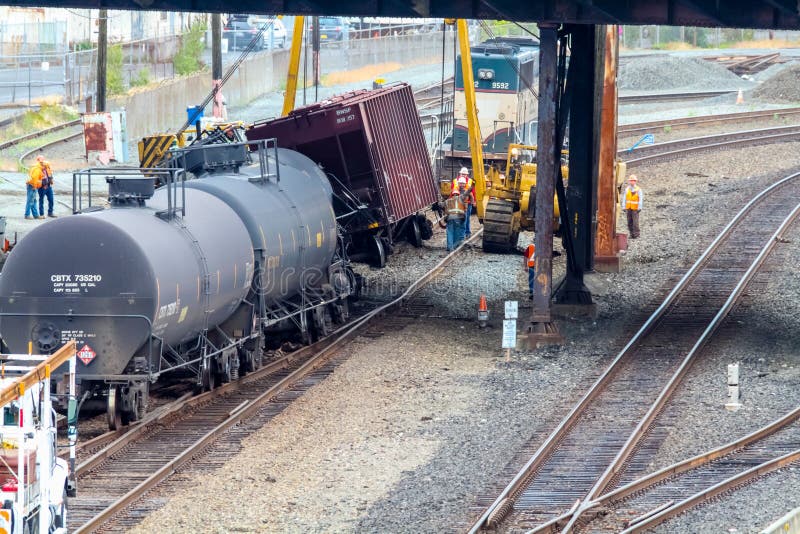

General cargo shifted to intermodal movement, first trailers on flat cars (TOFC), intermodal containers on flat cars (COFC), and then double-stacked containers, loaded on special well cars. The railroads de-emphasized "retail" railroading-movement of one or a few rail cars from a shipper's siding to a destination siding-in favor of long unit trains for bulk commodities, such as coal and ore. The 1980 Staggers Rail Act largely deregulated the U.S. Piers in Brooklyin and Manhattan declined in usage and were abandoned.

The Port Authority developed the Port Newark-Elizabeth Marine Terminal on Newark Bay. Containerization revolutionized shipping. The rail industry went through widespread consolidations and bankruptcies. After the war, the Interstate Highway System was built, along with many inland waterways, both competing with the railroads. The peak of rail freight came during World War II, when New York industries, including the Brooklyn Navy Yard, worked around the clock to support the war effort. High Line park at 20th Street in Manhattan. Even though the Poughkeepsie Bridge was closer to the city, it was less used. The New York Central crossed just south of Albany, New York, where it continued west paralleling the Erie Canal to create the Water Level Route which competed with the Pennsylvania Railroad's more direct route that had to cross the Allegany Mountains. The first rail crossing of the Hudson was the Poughkeepsie Bridge built in 1888. Rail freight traffic east of the Hudson that did not cross by barge had to go north some distance to cross the river by bridge. A rail freight tunnel from Staten Island to Brooklyn was proposed, but never completed. The rail tunnels required electric propulsion, limiting their use for freight. Trucks could deliver freight anywhere in the city without requiring a railroad siding. In the early 20th century, the Hudson barrier was surmounted by tunneling for passenger rail-and with the construction of the Holland Tunnel in 1927, the George Washington Bridge in 1931, and the Lincoln Tunnel in 1937-by creating fixed crossings for automobiles and trucks as well. Its southern portion included the High Line, a grade-separated viaduct that replaced the street-level railroad tracks on what was then known as " Death Avenue". The West Side Line, as it was called, brought freight cars to docks, warehouses and industries along Manhattan's west shore. One exception was a New York Central Railroad line on the east bank of the Hudson that extended into Manhattan for freight service. Train on the High Line viaduct passing underneath Manhattan's Bell Laboratories Building in 1936


 0 kommentar(er)
0 kommentar(er)
